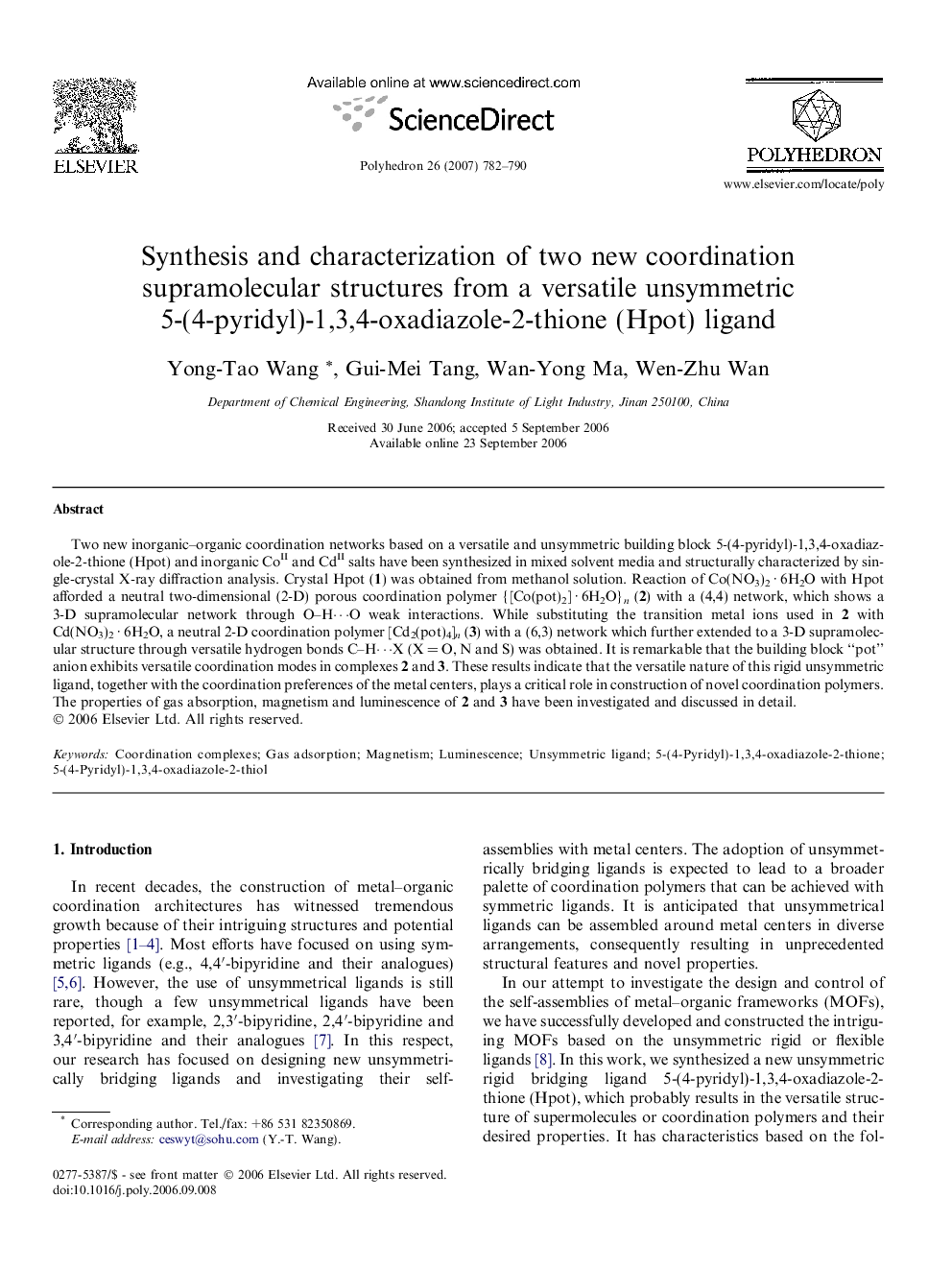| کد مقاله | کد نشریه | سال انتشار | مقاله انگلیسی | نسخه تمام متن |
|---|---|---|---|---|
| 1340811 | 979757 | 2007 | 9 صفحه PDF | دانلود رایگان |

Two new inorganic–organic coordination networks based on a versatile and unsymmetric building block 5-(4-pyridyl)-1,3,4-oxadiazole-2-thione (Hpot) and inorganic CoII and CdII salts have been synthesized in mixed solvent media and structurally characterized by single-crystal X-ray diffraction analysis. Crystal Hpot (1) was obtained from methanol solution. Reaction of Co(NO3)2 · 6H2O with Hpot afforded a neutral two-dimensional (2-D) porous coordination polymer {[Co(pot)2] · 6H2O}n (2) with a (4,4) network, which shows a 3-D supramolecular network through O–H⋯O weak interactions. While substituting the transition metal ions used in 2 with Cd(NO3)2 · 6H2O, a neutral 2-D coordination polymer [Cd2(pot)4]n (3) with a (6,3) network which further extended to a 3-D supramolecular structure through versatile hydrogen bonds C–H⋯X (X = O, N and S) was obtained. It is remarkable that the building block “pot” anion exhibits versatile coordination modes in complexes 2 and 3. These results indicate that the versatile nature of this rigid unsymmetric ligand, together with the coordination preferences of the metal centers, plays a critical role in construction of novel coordination polymers. The properties of gas absorption, magnetism and luminescence of 2 and 3 have been investigated and discussed in detail.
The rigid and unsymmetric building block 5-(4-pyridyl)-1,3,4-oxadiazole-2-thione (Hpot) is first developed as a bridging ligand and exhibits intriguing coordination modes in the process of self-assembling networks, which indicates that the versatile nature of this rigid unsymmetric ligand, together with the coordination preferences of the metal centers, plays a critical role in the construction of these novel coordination polymers or supramolecules.Figure optionsDownload as PowerPoint slide
Journal: Polyhedron - Volume 26, Issue 4, 1 March 2007, Pages 782–790